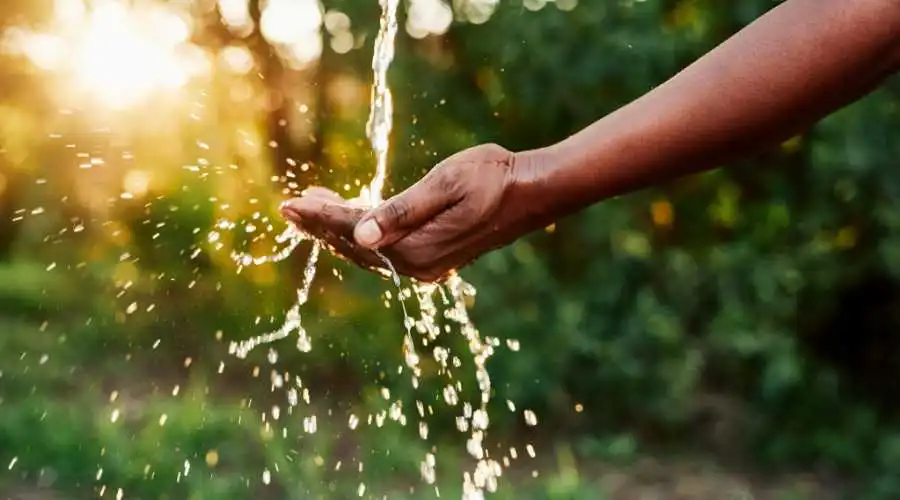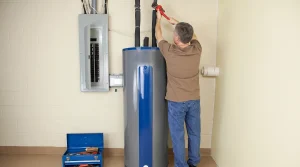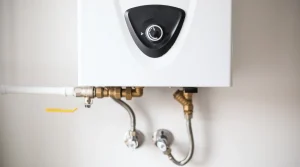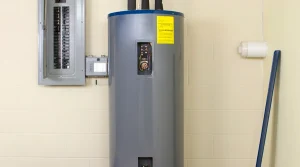Water scarcity is a growing concern across the nation, affecting communities and ecosystems alike. By adopting simple, mindful practices, you can conserve water, save money, and contribute to a sustainable future.
Key Takeaways
- Water conservation benefits both the environment and your household expenses.
- Simple changes, like fixing leaks and using WaterSense products, can have a significant impact.
- Rainwater harvesting and mindful power usage also contribute to water-saving efforts.
- Professional help is available for making your home water-efficient.
The Growing Need for Water Conservation
In recent years, water shortages have become an alarming issue, especially for states like New Jersey and California. According to the Environmental Protection Agency (EPA), 40 states are projected to experience serious water shortages within the next decade. The situation calls for urgent action from individuals, households, and communities to conserve this invaluable resource.
10 Simple Strategies to Conserve Water at Home
1. Invest in WaterSense Products
WaterSense is an EPA program that certifies products meeting rigorous water-saving standards. WaterSense-labeled showerheads, faucets, and toilets are:
- At least 20% more efficient than standard models.
- Compliant with EPA water conservation guidelines.
- Designed to significantly reduce household water usage.
By switching to WaterSense fixtures, households can achieve meaningful water savings with minimal effort.
2. Turn Off the Tap When Not in Use
A common yet overlooked habit is leaving the tap running while brushing teeth or washing hands. Turning off the faucet during these activities can save gallons of water daily. Small actions, repeated consistently, lead to substantial savings over time.
3. Detect and Fix Leaks Promptly
Leaks, even minor ones, waste a staggering amount of water annually. Regularly inspect faucets, pipes, and joints for signs of leakage. Repairing a single dripping faucet can save up to 3,000 gallons of water per year.
4. Shorten Your Showers
Traditional showerheads can use up to 5 gallons of water per minute. By reducing your shower time by just two minutes, you can save 10 gallons of water per day. Consider installing water-efficient showerheads to further cut down on usage.
5. Run Full Loads in Washers and Dishwashers
Operating washing machines or dishwashers with partial loads is inefficient. Wait until you have a full load before running these appliances. Modern machines are often more water-efficient than hand washing, making them a better choice for conserving water.
6. Install a Rain Barrel
Rainwater harvesting is a cost-effective method to collect and reuse water for irrigation. Rain barrels allow you to:
- Water gardens and lawns without using tap water.
- Reduce your water bill.
- Minimize stormwater runoff that can lead to erosion and pollution.
7. Use Less Power
Many power plants rely on water for cooling processes. By reducing electricity usage, you indirectly conserve water. Simple measures like turning off lights, unplugging devices, and utilizing natural light can significantly lower your water footprint.
8. Keep Drinking Water in the Refrigerator
Instead of running the tap for cold water, store a jug of drinking water in your fridge. This practice not only saves water but also ensures you have refreshing water readily available.
9. Cover Your Pool
Pool covers help reduce water evaporation and maintain consistent temperatures. According to the Department of Energy, using a pool cover can cut water loss by more than 50%. This practice also reduces chemical usage and heating costs.
10. Wash Cars at Professional Car Washes
Washing your car at home can use over 100 gallons of water, whereas professional car washes often employ water recycling systems. Choose facilities with eco-friendly practices to further minimize water waste.
Maintaining Water Reserves
For states like California, keeping track of water reservoirs is essential for understanding the broader water conservation landscape. Adopting even a few water-saving habits can have a meaningful impact on statewide water reserves.
Frequently Asked Questions (FAQ)
Q: What are WaterSense products, and why should I use them?
A: WaterSense products are certified by the EPA for their water efficiency and performance. They use at least 20% less water than standard products while maintaining the same functionality, helping you save both water and money.
Q: How can I detect hidden leaks in my home?
A: Monitor your water meter for fluctuations when water is not in use. Alternatively, check your faucets, pipes, and toilets for visible signs of dripping or pooling water. Fix any issues promptly to avoid wastage.
Q: Are rain barrels difficult to maintain?
A: Rain barrels are low-maintenance. Regularly clean the barrel, inspect the spout for blockages, and ensure the screen or filter is clear of debris to keep the system functioning efficiently.
Q: Is hand washing dishes more water-efficient than using a dishwasher?
A: Not necessarily. Modern dishwashers use less water than washing dishes by hand, provided you run them with full loads. Always check the efficiency rating of your appliances.
Q: Can conserving water really lower my energy bill?
A: Yes! Reducing water usage decreases the energy needed to pump, heat, and treat water, leading to lower utility bills.
Q: What other resources are available for learning about water conservation?
A: The EPA’s WaterSense website, local water utilities, and community workshops often provide valuable tips and tools for water-saving practices.
Get Professional Help
If you need assistance implementing water-saving measures, BJC Clifton Plumbers is here to help. Whether it’s installing a WaterSense fixture or addressing plumbing issues, we provide expert solutions to enhance your home’s water efficiency. Contact us today for reliable service and advice.
By incorporating these strategies into your daily routine, you’ll not only conserve water but also contribute to a more sustainable future for everyone.




